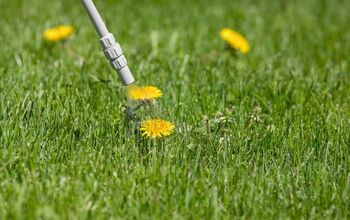5 Pros And Cons Of Whole House Humidifiers

Many people live in a dry climate (hello, desert) or experience dry seasons (I’m looking at you, winter). To mitigate the effects of this dry air, many people often use humidifiers in their homes. Instead of having one for each room that requires daily refilling, what if you had one for the whole house?
A whole-house humidifier can be a great solution to increase comfort in your home. While they can be costly and require some maintenance, they’re a worthwhile investment to improve your quality of life.
Do You Need Central Humidifier Installation or Replacement?
Get free, zero-commitment quotes from pro contractors near you.

Why Do I Need a Humidifier?
Humidifiers help to solve a range of discomforts in our bodies. For example, they can help prevent dry skin, chapped lips, sore throats, sinus irritation, and allergies caused by dry air. This dryness is often caused by the heating or air conditioning systems in our homes.
An optimal level of humidity helps us sleep better. It keeps the skin of babies soft and their airways clear. Pets can also have skin or respiratory irritations from dry air, just like us. A bit of humidity can even help reduce symptoms of illness, like colds and flu.
What Is a Whole House Humidifier?
Many home systems begin as necessities in one room and can expand to serve a whole home with one system. A whole-house humidifier provides moisture to your entire home instead of just one room.
There are two basic models: portable units or HVAC inline units. Both function to maintain the humidity level of the house to increase your comfort.
Portable Units
Portable humidifiers are standalone units that function the same way as single-room units but are far more powerful. They can hold 2 to 5 gallons of water and provide humidity to homes up to 2500 square feet. Many versions have casters or wheels, so you can relocate them to any part of your house, depending on your needs.
This type of whole-home humidifier is DIY friendly. It’s ideal for homes without an existing HVAC system.
It’s also an excellent choice for a condo or apartment where you don’t have access to the HVAC system. Plus, since it doesn’t involve hooking into a duct system or central air, the setup is simple.
Portable humidifiers have fans that run at various speeds to propel the created humid air through your home. For best results, put the unit in a central location or near an HVAC return. This placement helps circulate humidity throughout the system.
HVAC Installed Units
HVAC installed (or inline) units connect to existing ductwork near a furnace or air handler. They circulate moisture directly into the duct system and more effectively distribute humidity throughout the house than portable humidifiers.
A single HVAC installed unit is satisfactory for homes up to 5000 square feet. If your home is larger than that, you can add a second unit to increase capacity. There’s no need to refill a tank because you connect the system to a water line, directly feeding the unit.
These systems require an HVAC professional to install, so they can be considerably more expensive. If you have an existing HVAC system in your home, ask yourself if you can afford to make the upgrade. If the answer is yes, this system can be a worthwhile investment.
Steam vs. Evaporative Humidifiers
There are two types of HVAC-installed units: steam humidifiers and evaporative humidifiers.
Steam Humidifiers
A steam humidifier uses two electrodes to boil water in the tank, vaporizing it into the air. A blower fan or air handler then carries the moisture into the ducts for distribution throughout the system.
It’s the most effective way to produce moisture for your home’s air because it works in a closed system. For each gallon of water boiled, it produces about one gallon of water vapor. This consistent distribution makes it much easier to reach your target humidity levels throughout the home.
Evaporative Humidifiers
This type of whole-house humidifier uses the principle of evaporation to release moisture into the air. Water is poured over a pad or filter; then a fan blows across it to evaporate water into the air. This humid air is then blown into the HVAC system and throughout the house.
Some portable units use this method of air vapor generation as well as two kinds of HVAC systems. A bypass system will distribute the humid air by the power of the HVAC system’s air handler. A powered system has an additional fan that helps facilitate the distribution of moist air.
Although 90% of the earth’s atmosphere’s water comes from evaporation, evaporative humidifiers aren’t as effective as steam. Evaporative humidifiers can use as many as 14 gallons of water to produce 1 gallon of water vapor.
Whole House Humidifiers: Pros and Cons
There are several factors to consider when purchasing a whole-house humidifier. Some of the concerns include price, maintenance, and existing HVAC systems throughout your home.
The Pros
1. Automatic Humidity Control
Each system comes with a humidistat: it’s like a thermostat for humidity. You can set the humidistat to a level that’s comfortable for your family.
2. Low Maintenance
For HVAC inline units, you only need to change the filter or evaporator panel once a year. It’s also a good idea to wipe down the unit to remove any mineral debris (scale) that accumulates. Filters are affordable, usually around $10.
For portable units, maintenance is similar to a tabletop humidifier traditionally used for a single room. You’ll want to clean the unit once every two weeks and add an antimicrobial agent to the tank. Filling the tank with water will depend on the tank’s size and how much you use it.
A homeowner can easily do all of this maintenance in a matter of minutes.
3. Ease of Installation (Portable Units)
Just wheel the unit to its new home, fill it up, and turn it on. The hardest part will be finding a centrally located area of your home to place the humidifier. If your home has an HVAC system, consider putting it by the HVAC return for optimal circulation of humid air.
4. Improves Air Quality
The number one reason to get a humidifier: comfort! Not only does humid air make your skin and body feel better, but it also reduces symptoms of illness.
Aside from the benefits to your family, the house itself appreciates humid air, too. A humidifier can help preserve wood floors and furniture by preventing cracking.
5. Increases the Value of Your Home
A whole-house humidifier (particularly one installed alongside the HVAC unit) is considered a major improvement to your home. It can increase the resale value and help attract potential buyers.
The Cons
1. Expense
Portable humidifiers can start at $150, and large HVAC installed units can cost as much as $800. A professional contractor’s labor to install the system can easily be another $500, depending on where you live.
2. Mold and Mildew
As with any damp environment, mold can grow within the system, and harmful spores can spread throughout your home’s air. This can be true for both HVAC installed and portable units. Ensure there’s a free flow of air to prevent too much humidity from accumulating in one place.
Dust is a breeding ground for mold when moisture is present, so HVAC systems create ideal environments for mold growth. However, it’s easy to mitigate these risks by cleaning the units frequently and changing the filter as directed.
3. Other HVAC Problems
Especially in older houses, HVAC systems may have places that allow air to leak out. If you install a humidifier and the system is leaky, it may not have many benefits for your home. For example, it might cause all the humidity to accumulate in one space, such as the attic.
Is It Worth It?
Depending on your location and your family’s needs, only you can decide if a whole-house humidifier is right for you. Do you live in a dry climate year-round? Or are there just certain days or months where you need a little boost?
If raising your home’s humidity would significantly improve your quality of life, then a whole-house humidifier is a worthy investment. You can always start with a portable unit, which offers lower cost and easier installation, and see how that goes.
Do You Need Central Humidifier Installation or Replacement?
Get free, zero-commitment quotes from pro contractors near you.

Related Questions
How do I choose the best portable unit for my needs?
When choosing a unit that’s right for you, there are several factors to consider.
- Aesthetics. Do you want something sleek and modern? Would you rather have one that hides in plain sight by mimicking a piece of furniture? Is it okay if the humidifier just looks like a functional appliance?
- Tank size. How big is the space you need to humidify? How often will you be able (or willing) to fill the water tank? A larger tank will allow you to go a day or two without needing to add water.
- Noise. In some models, high-powered fans can be noisy. Will this unit be in a location where noise will bother you (like near a bedroom)? Or do you enjoy the sound of white noise?
One of the best brands of portable whole-house humidifiers is Aircare. They offer several different models, including a pedestal unit, console version, and credenza model that masquerades as furniture. Other popular brands include Opolar and Holmes.
What is the ideal level of humidity in a home?Experts say that the optimal air humidity level is between 35-45%. When humidity rises over 50%, there’s a much larger chance of mold growth. Decide what level of humidity feels best to you, but keep it under 50% for safety.

Stacy Randall is a wife, mother, and freelance writer from NOLA that has always had a love for DIY projects, home organization, and making spaces beautiful. Together with her husband, she has been spending the last several years lovingly renovating her grandparent's former home, making it their own and learning a lot about life along the way.
More by Stacy Randall











![The Pros and Cons of Whole House Surge Protectors [Explained]](https://cdn-fastly.upgradedhome.com/media/2023/07/31/9070390/the-pros-and-cons-of-whole-house-surge-protectors-explained.jpg?size=350x220)















